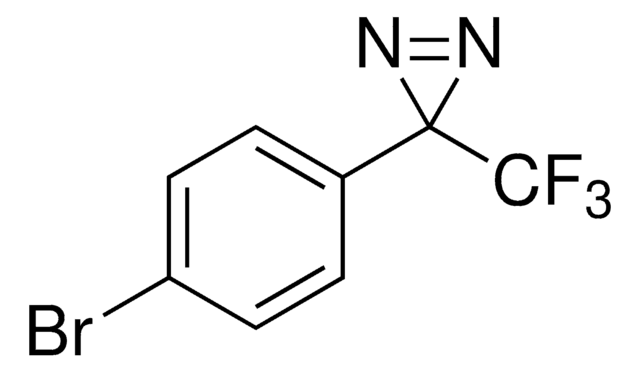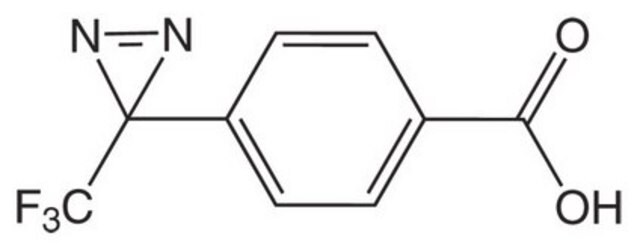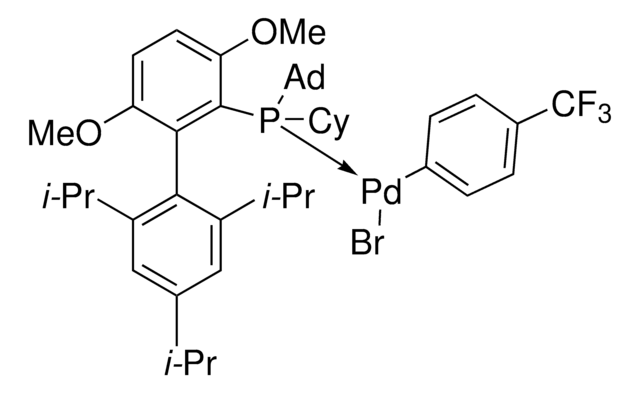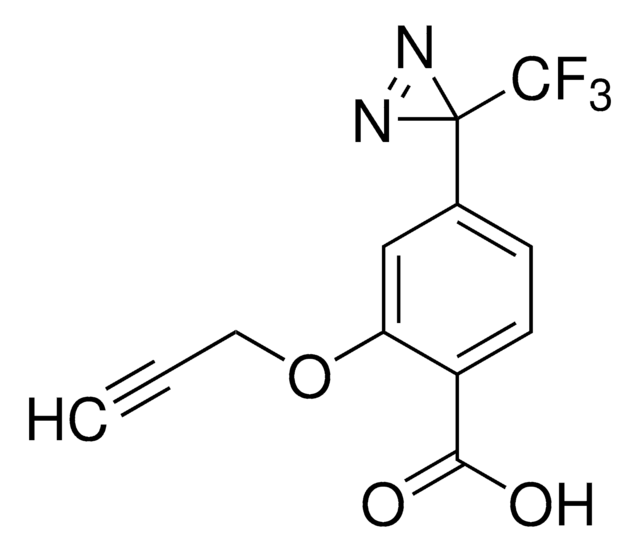추천 제품
저장 온도
2-8°C
Quality Level
애플리케이션
This bis-diazirine molecule was designed to covalently crosslink low-surface-energy (non-functionalized) materials through the formation of highly reactive carbene intermediates that insert themselves into C–H bonds on adjacent polymer surfaces when activated by moderate heat or ~350nm light.
Our bis-diazirine molecule allow remarkably efficient and stable perovskite solar cells. A study showed it contribution to retaining nearly 99% of their initial efficiency even after 1,000 hours of continuous illumination. At constant heat (60°C) bis-diazirine treated PSCs maintained nearly 98% efficiency after 600 hours of continuous operation, whilst untreated lost 27% efficiency under the same conditions. Overall, bis-diazirine treated PSCs achieved a high certified efficiency of over 24% with long operational stability over 1,000 hours.
Further, it can be used in adhesive and textile strengthening applications. Diazirine crosslinkers don’t distinguish between polymer substrates and can be used to bond dissimilar materials like PP and PE together into rigid thermoset plastics. It has been demonstrated to bond polypropylene, high density polyethylene (HDPE), and other polymers to each other, and to strengthen ultrahigh molecular weight polyethylene (UHMWPE) textiles by crosslinking between individual fibers. Bis-diazirines may also have utility in tissue bonding applications.
Our bis-diazirine molecule allow remarkably efficient and stable perovskite solar cells. A study showed it contribution to retaining nearly 99% of their initial efficiency even after 1,000 hours of continuous illumination. At constant heat (60°C) bis-diazirine treated PSCs maintained nearly 98% efficiency after 600 hours of continuous operation, whilst untreated lost 27% efficiency under the same conditions. Overall, bis-diazirine treated PSCs achieved a high certified efficiency of over 24% with long operational stability over 1,000 hours.
Further, it can be used in adhesive and textile strengthening applications. Diazirine crosslinkers don’t distinguish between polymer substrates and can be used to bond dissimilar materials like PP and PE together into rigid thermoset plastics. It has been demonstrated to bond polypropylene, high density polyethylene (HDPE), and other polymers to each other, and to strengthen ultrahigh molecular weight polyethylene (UHMWPE) textiles by crosslinking between individual fibers. Bis-diazirines may also have utility in tissue bonding applications.
주의사항
Diazirines react with light or heat to release nitrogen gas and form reactive carbenes. Although the product is bench-stable and can be weighed out under standard room lighting, it should be stored in a fridge or freezer, away from light.
Yoshida correlations and mechanical testing indicate that the product is not a likely explosion hazard, but all diazirines should be handled as potential shock-sensitive materials.
Yoshida correlations and mechanical testing indicate that the product is not a likely explosion hazard, but all diazirines should be handled as potential shock-sensitive materials.
기타 정보
Low Surface Energy (LSE) polymers such as polyethylene and polypropylene are extraordinarily useful materials that are increasingly found at the forefront of technological innovation, from ropes and mechanical parts to performance textiles and medical devices. This is because LSE polymers are relatively cheap to produce, can be molded to specific dimensions, and offer remarkable strength, durability, and resistance for such lightweight materials. However, these same qualities result in LSE polymers being extremely resistant to adhesion (gluing), layering, coating, and dyeing applications, which limits how these materials are used. In response to this challenge, we offer a highly reactive compound that chemically insert itself into unreactive polymer surfaces. In this way, it transform LSE polymers into materials that are no longer resistant to gluing, coating or other adhesion-based applications. This breakthrough “diazirine” technology is enabling the world’s most abundant polymers to be used in a host of new applications.
신호어
Danger
유해 및 위험 성명서
Hazard Classifications
Org. Perox. C
Storage Class Code
5.2 - Organic peroxides and self-reacting hazardous materials
WGK
WGK 3
Flash Point (°F)
Not applicable
Flash Point (°C)
Not applicable
가장 최신 버전 중 하나를 선택하세요:
자사의 과학자팀은 생명 과학, 재료 과학, 화학 합성, 크로마토그래피, 분석 및 기타 많은 영역을 포함한 모든 과학 분야에 경험이 있습니다..
고객지원팀으로 연락바랍니다.









